A Comprehensive Guide to Installing a Bath Drain
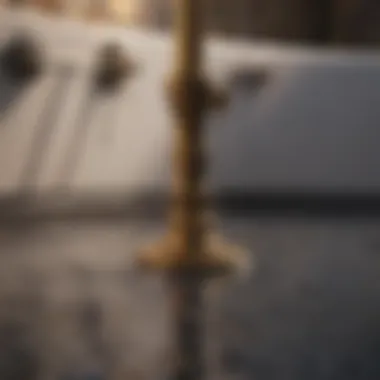

Intro
Installing a bath drain is an essential home improvement task that many homeowners might face at some point. Whether you are renovating your bathroom or simply experiencing plumbing issues, knowing how to install a bath drain is vital. This skill is part of maintaining the functionality of your bathroom and ensuring that water drains smoothly.
Understanding this topic is fundamental for both seasoned handymen and novices alike. A properly installed bath drain is crucial for preventing leaks and ensuring an efficient drainage system. When the bath drain is working correctly, it not only sustains the plumbing system but also contributes to an overall pleasant bathing experience.
Common Challenges and Solutions
When installing a bath drain, several challenges may arise. Here are some common issues faced by homeowners:
- Leaking Connections: One of the most frequent problems is leaks at the connections. These can occur due to improper sealing or misalignment.
- Misalignment of Pipes: If the pipes are not aligned correctly, they can create blockages, which cause water to back up.
- Difficulty in Removal of Old Drains: Removing an existing drain may require a bit of elbow grease, especially if it has been in place for years and corrosion has set in.
To overcome these challenges:
- Ensure you are using the right tools and materials for sealing connections. This can include Teflon tape or plumber's putty, which helps create a tight seal.
- Take your time to measure and align all pipes before securing them. Double-check your work to avoid any issues.
- Use a drain removal tool to assist in detaching old drains without damaging surrounding materials.
Proper planning and preparation can greatly reduce the chances of encountering problems during installation.
Product Recommendations
When selecting products for installing a bath drain, quality is paramount. Here are some brands to consider:
- Oatey: Known for its trusted plumbing products, Oatey offers a range of reliable bath drain assemblies and fittings.
- Kohler: Kohler provides stylish and functional drain options that often come with extended warranties.
- Moen: Moen offers a variety of easy-to-install drainage systems with excellent customer reviews.
Each of these brands features products designed with durability in mind, often implementing innovative designs that simplify the installation process.
Step-by-Step Guides
To install a bath drain effectively, follow these organized steps:
- Gather Tools and Materials: You will need a wrench, a screwdriver, plumber's putty, Teflon tape, and a new drain assembly.
- Turn Off Water Supply: Before you begin, ensure the water supply to the bath is turned off to prevent any unwanted surprises.
- Remove the Old Drain: Using the drain removal tool, carefully detach the existing bath drain. Clean around the area to prepare for the new installation.
- Install Gasket: Place a rubber gasket over the hole to create a watertight seal before fixing the new drain.
- Apply Plumber's Putty: Apply plumber's putty to the underside of the new drain. This ensures a tight seal against leaks.
- Secure the Drain: Insert the new drain assembly into the hole and tighten it securely using a wrench.
- Connect Pipes: Carefully connect all the pipes, ensuring they are properly aligned and secure them using Teflon tape.
- Test for Leaks: Once everything is assembled, turn the water supply back on to check for leaks. This step is crucial to ensure everything is functioning correctly.
By following these practical steps, you will be well on your way to successfully installing a bath drain.
Foreword to Bath Drain Installation
Installing a bath drain is a significant task that requires attention to detail. This section aims to unveil the critical aspects of bath drain installation. Mastering this process not only improves functionality but also enhances the overall aesthetic of your bathing space.
Understanding the Bath Drain System
A bath drain system comprises several components working together seamlessly. At its core, the drain includes the drain body, the stopper, and the overflow. The drain body collects water, guiding it into the plumbing system. The stopper controls the water flow, allowing you to fill the tub as needed. The overflow acts as a safeguard, preventing water from spilling over.
Understanding these components fosters better decision-making when it comes to repairs or upgrades. Knowing how each part functions can also help homeowners appreciate the kind of maintenance required.
Importance of Proper Installation
Proper installation of a bath drain is non-negotiable. A correctly fitted drain minimizes the risk of leaks, which can lead to significant water damage over time. Furthermore, a well-installed drain facilitates efficient water flow, ensuring a pleasant bathing experience.
"Ignoring installation details can result in costly repairs later on."
Moreover, a properly installed system contributes to the longevity of the plumbing infrastructure. It prevents issues like clogs or backflow, which can create inconveniences in daily life. In summary, the importance of understanding bath drain installation cannot be overstated—it serves as the foundation for effective plumbing practices.
Tools and Materials Required
Proper installation of a bath drain necessitates a careful selection of tools and materials. This section delves into the critical aspects of preparing for the installation process. Using the right tools ensures efficiency and reduces the likelihood of errors. Additionally, understanding materials required can directly impact the performance and longevity of the drainage system.
The choice of tools and components reflects on the overall quality of work. Investing in high-quality tools may have a higher upfront cost, but they often lead to enhanced durability and reduced maintenance needs later. Moreover, organized preparation helps in preventing unnecessary frustrations during installation.
Essential Tools for Installation
To begin with, each installation requires basic tools. These tools include:
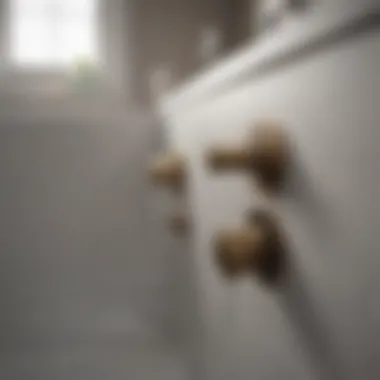
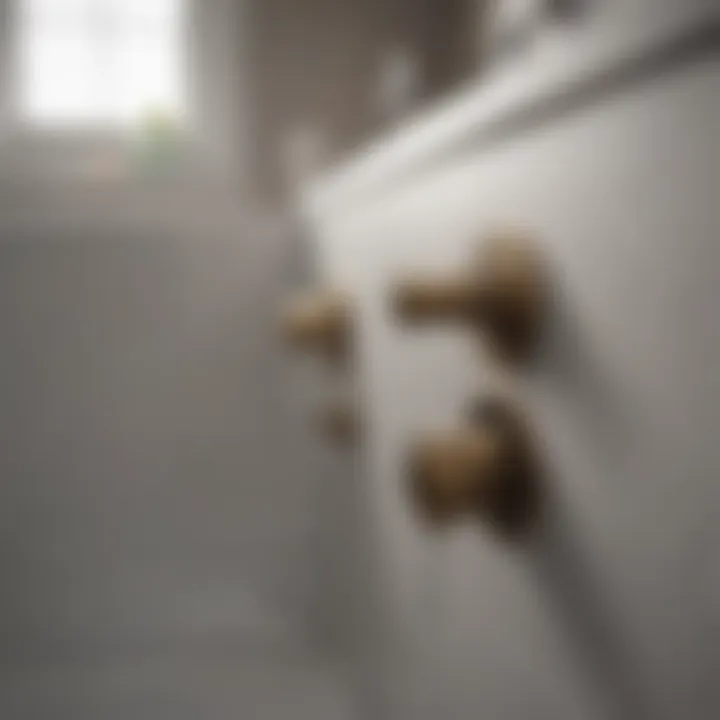
- Adjustable Wrench: Essential for tightening and loosening various fittings.
- Plumber's Putty: Ideal for sealing around the drain to prevent leaks.
- Screwdriver Set: Often needed to remove screws from the drain assembly.
- Pipe Cutter: Useful for cutting pipes to the required lengths accurately.
- Tape Measure: Necessary for precise measurements when positioning the new drain.
Having these tools on hand not only simplifies the removal of the old drain but also streamlines the installation of the new one. Ensure they are in good condition for maximum efficiency.
Recommended Drain Components
Choosing the right components is equally important. Various materials and types of drains are available in the market, and each has unique attributes that can influence performance. Consider these commonly used components:
- PVC Drains: These are popular due to their resistance to corrosion and simplicity in installation.
- Brass Drains: Known for their durability, brass drains can withstand heavy use and are often preferred for their aesthetic appeal.
- Silicone Sealant: Used in conjunction with plumber's putty, silicone provides an extra layer of waterproofing.
While selecting drain components, focus on compatibility with existing plumbing. Proper fit ensures a smooth installation process and minimizes future issues.
Always prioritize quality over cost when choosing tools and materials. Investing upfront can save time and money over the long run.
Pre-Installation Preparations
Proper pre-installation preparations are fundamental in ensuring a smooth bath drain installation process. This phase involves a systematic approach that mitigates unexpected problems during the installation. Focusing on the right preparations can save time and reduce the risk of errors.
Gathering Necessary Tools
Before starting, gather all necessary tools. The right tools are crucial; they help facilitate the installation without unnecessary delays. The essential tools typically include a plumber's wrench, a pipe cutter, a bowl wrench, and sealant tape. Have these on hand before you begin.
- Plumber's Wrench: Useful for gripping and turning bolts, especially in tight spaces.
- Pipe Cutter: Perfect for making clean cuts on pipes, ensuring no jagged edges.
- Bowl Wrench: Designed to reach faucet fittings that other tools cannot.
- Sealant Tape: Important for ensuring watertight seals on the threads of the pipes.
By ensuring all tools are ready, you can prevent frustration and interruptions during the project.
Examining the Existing Setup
Take time to examine the current setup. This step is crucial as it informs you of any potential challenges that might arise when installing the new drain. Inspect the old drain's assembly to determine if there are any signs of damage. Look for rust or corrosion, which can indicate an underlying issue that needs addressing before the new installation.
Additionally, check the drain's alignment with the existing plumbing. Misalignment can lead to complications during the attachment of the new drain unit.
Finally, note how many fittings and types of connectors you have. Understanding these details can guide you in purchasing the correct replacement parts.
Safety Precautions to Follow
Taking safety precautions is vital during this project, whether you are experienced or a novice. Always shut off the water supply to the bath prior to beginning any work. This action prevents potential flooding or water damage to your home.
Wearing protective gear, such as gloves and safety glasses, is also recommended. This gear protects against cuts from sharp tools and debris that may pop up while removing old components.
It's wise to keep your work area organized and free from clutter. This practice reduces the risk of accidents or misplacing tools, especially when handling small components that can be difficult to track down. > Keeping a clean workspace is even more important when dealing with plumbing problems, as it ensures efficient work and safety.
Steps for Removing the Old Drain
Removing the old bath drain is a crucial step in the installation process. By doing so, you prepare the area for the new drain system, allowing for proper functioning and preventing issues in the future. Understanding how to safely and effectively remove the existing drain will save time and mitigate complications during installation. This section will guide you through essential actions in the removal process, ensuring a smooth transition to your new bath drain setup.
Disconnecting the Old Drain Assembly
To begin the removal of the old drain assembly, turn off the water supply. This ensures that no water flows through during your work, allowing for an uninterrupted process. Locate the screws or clips that secure the drain assembly to the tub. Use a screwdriver or pliers to carefully detach these components.
Be gentle to avoid damaging the surrounding area. Once unscrewed, you will need to pull the old drain out of the tub. If the assembly is stuck, you may need to twist it gently or apply a lubricant to loosen it. This step is crucial, as leaving any remnants of the old drain can cause leaks in the future.
Cleaning the Drain Area
After successfully removing the old drain, the next task is to clean the area thoroughly. This step is often overlooked, yet it is essential for a successful installation.
Use a damp cloth to wipe down the tub surface where the drain was located. Remove any debris, grime, or old sealant. Ensure that all dirt and residues are away, as these can interfere with the new drain's sealing process. For stubborn residue, consider using a gentle cleaning agent.
Once cleaned, allow the area to dry completely before proceeding. A clean surface promotes a better seal for your new installation, which helps in preventing leaks and prolonging the lifespan of your bath drain.
Remember: A thorough cleaning lays the groundwork for a successful and trouble-free installation of your new bath drain.


Following these steps ensures that the installation of the new bath drain begins with a solid foundation, reducing potential issues down the line.
Installing the New Bath Drain
Installing a new bath drain is a vital step in ensuring that your plumbing system functions efficiently. A well-installed drain not only prevents leaks but also ensures optimal water flow. This section delves into key elements involved in the installation process, highlighting the benefits and specific considerations one should keep in mind when installing a new bath drain.
Positioning the New Drain
The position of the new bath drain is crucial for effective drainage. It is essential to align the drain with the existing plumbing system to avoid future complications. When positioning the drain, consider factors such as the size of the tub and the location of plumbing ties.
- Measure Carefully: Start by measuring the area where the drain will sit. The distance from the walls and other fixtures is important.
- Center the Drain: If possible, place the drain in the center of the tub. This promotes even water flow and reduces the likelihood of clogs.
- Check Dimensions: Ensure the drain is compatible with existing drainpipes and fittings. Mismatched sizes can lead to leaks.
When correctly positioned, the new bath drain will facilitate smooth water removal and prolong the life of your plumbing system.
Sealing the Drain Assembly
After safeguarding the position of the drain, the next essential step is sealing the drain assembly. Proper sealing prevents water from leaking and helps to avoid potential damage to surrounding structures.
- Choose the Right Sealant: Use a plumber’s putty or a silicone sealant designed for bathroom use. These materials are water-resistant and durable.
- Apply Evenly: Apply the sealant evenly around the threads of the drain. This guarantees a tight seal when the drain is screwed into place.
- Tighten the Assembly: Once the sealant is in place, carefully tighten the drain assembly. Do not overtighten, as this may cause damage to the drain itself.
An effectively sealed drain assembly is vital for preventing future leaks.
Ensuring Proper Alignment
Once the drain is in place and sealed, ensuring proper alignment with the plumbing system is the final crucial step. Misalignment can lead to various issues, including blockage and potential water pooling.
- Inspect Connections: Examine the links between the new drain and existing pipes. Ensure they fit snugly without any gaps.
- Use a Level: Utilizing a bubble level can assist in confirming that the drain is positioned correctly. A drain that is not level can lead to drainage issues over time.
- Double-Check Before Finalizing: Before securing any fixtures permanently, double-check all connections and alignments. This prevents having to remove the assembly later to correct issues.
Ensuring perfect alignment makes a significant difference in the functionality of the drain installation.
"Proper installation and alignment of your bath drain can save you significant time and money in repairs down the line."
By careful positioning, effective sealing, and ensuring alignment, you can complete the installation of your new bath drain successfully. Each of these steps contributes to a more reliable plumbing system, enhancing the overall experience within your home.
Connecting the Drain to the Plumbing System
Connecting the drain to the plumbing system is a critical step in the installation of a bath drain. This process ensures that wastewater is efficiently channeled out of the bath and into the home's plumbing system. If not done correctly, it could lead to leaks, water damage, or obstructed drainage, all of which can result in costly repairs.
Several factors are essential when connecting the drain. First, the type of pipes being used – commonly PVC or ABS – must be compatible with your existing plumbing system. Each material has its own fitting requirements, and understanding these is key to a successful connection. Moreover, the alignment of the pipes should be precise. Misalignment can cause stress on the connections, which may lead to future leaks.
In addition, the positioning of the drain plays a significant role in water flow. Proper slope should be maintained to allow gravity to assist in drainage. A general rule is to ensure a slope of approximately one-quarter inch per foot. This gradient prevents stagnant water and reduces the risk of clogs over time.
Overall, taking time to correctly connect the drain will save you from many potential issues. It creates a foundation for smooth operation and longevity of your plumbing system. It's always wise to take careful measurements and double-check the fit before securing everything in place.
Attaching Drain Pipes
To attach the drain pipes effectively, begin with selecting the right size and type of pipe. Standard bath drain pipes usually measure 1-1/2 inches in diameter. Ensure that the edges of both pipe ends are clean and free from debris; this facilitates a better seal.
Next, apply the appropriate primer and solvent cement if using PVC pipes. This step will help in creating a strong bond between the pipes and prevent leaks in future. For rubber gaskets, a simple twist should be enough to secure the joint.
When fitting the pipes together, ensure they are inserted all the way into the fitting. Turn them slightly while pushing to ensure a tight fit. These are the basic steps but here are more points to consider:
- Ensure any nuts or fittings are tightened snugly but not over-tightened to avoid damage.
- Check if any additional tools, like a wrench, are needed to secure fittings properly.
- After assembly, take a moment to inspect all connections visually.
Securing Connections
Securing connections is vital for preventing leaks and ensuring the reliability of your installation. To do this, finish tightening all fittings while avoiding excessive force which could crack the pipes or wreck the seal. Use plumbing tape or thread sealant on threaded joints; this can help fill in gaps.
Once everything is connected, it is essential to conduct a water test. Run water through the new drain system while observing each connection. Look for signs of leakage. This initial testing helps in identifying if any adjustments are needed.
If you find a leak, turn off the water immediately and service that specific connection. Adjust as necessary and re-test until all connections are secure without leaks. This thorough approach ensures a well-functioning plumbing system that will perform effectively for years.
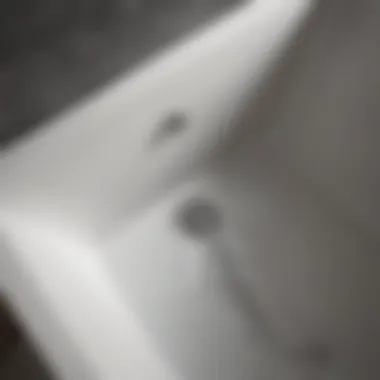
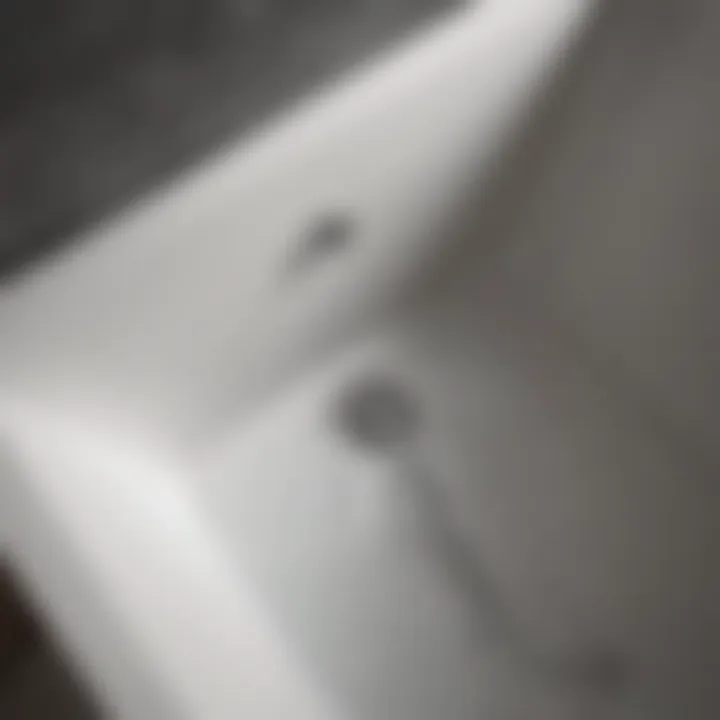
"A well-connected drain system is fundamental to avoiding future plumbing problems. Ensure every connection is secure to enjoy worry-free use."
Taking the time to carefully attach the drain pipes and secure all connections not only enhances the reliability of your new installation but also guarantees that it will serve you well in the long term.
Testing the New Installation
Once the new bath drain is installed, the next crucial step is testing the new installation. This phase is essential to ensure the system functions correctly and reliably. Proper testing can prevent future problems and ensure that everything operates as intended. It allows you to identify any potential issues immediately, which is far easier than addressing them later on.
Checking for Leaks
Leakage can cause significant damage over time, both to your plumbing system and to the surrounding areas in your bathroom. To check for leaks:
- Visual Inspection: Begin by visually inspecting the areas around the connections. Look for any signs of water pooling or dripping.
- Dry Test: Before running any water, wipe the connections dry and then check them after a few minutes. Any new moisture indicates a possible leak.
- Water Test: Turn on water and let it run for a few minutes. Observe the joints and connections closely for any moisture. If a leak is present, it is often at the junction points of the pipes or the drain flange.
Consider using a damp cloth to help identify slow leaks, as they may not be immediately visible. Should you find a leak, it’s important to tighten the connections or reapply sealant as necessary.
Ensuring Proper Water Flow
Water flow is another critical aspect to observe. If water is not draining as expected, it can lead to poor performance and may indicate obstruction or improper installation. To ensure proper water flow:
- Observe Drainage Rate: Fill the bath with water and observe how quickly it drains once the plug is removed. A proper installation should allow water to flow swiftly without backflow.
- Check for Obstructions: If the drainage is slow, double-check the new drain and pipes for any blockages created during installation. Remove any debris that might restrict water flow.
- Assess Installation Alignment: Improper alignment of the drain can also affect drainage. Make sure that all pipes are correctly positioned and angled to allow water to flow freely from the drain to the plumbing system.
In this phase, taking time to thoroughly test your installation pays off. Making necessary adjustments early on minimizes future complications. A well-functioning bath drain contributes not only to convenience but also to the overall longevity of your plumbing system.
"A proactive approach to checking your new bath drain can save time and money in the long run."
Implementing these tests ensures you can enjoy your new installation without worrying about leaks or drainage issues. Proper maintenance and awareness of your bath drain setup will lead to a more satisfying user experience.
Common Issues and Troubleshooting
Addressing common issues and troubleshooting is a vital segment in bath drain installation. An understanding of potential setbacks can save time and resources. Homeowners may face issues after installation which, if not rectified early, can escalate into larger problems. Recognizing these issues ensures that your bathing experience is comfortable and free of disruptions.
Identifying Potential Problems
Several problems may arise in bath drain installation. Below are some common concerns:
- Leaks: Water may seep from joints or the drain itself due to improper sealing or misalignment.
- Slow Drainage: If water doesn't drain away swiftly, it often indicates a blockage or improper slope of pipes.
- Unpleasant Odors: A smell from the drain could suggest a trap is dry or the pipe has compacted debris.
- Gurgling Sounds: This noise may signal air trapped within the plumbing.
It is necessary to inspect these issues closely. Each problem has distinct signs that can help in diagnosing the source. Noticing these aspects early on can facilitate easier resolutions.
Solutions to Common Issues
Once problems are identified, appropriate solutions are essential. Here are some effective solutions to the listed issues:
- Leaks: Recheck the connections, ensuring each part is tight. Replace any damaged washers or seals to stop water seepage.
- Slow Drainage: Use a plumber’s snake or a drain cleaner to eliminate clogs. Check if the pipes are pitched properly to maintain flow.
- Unpleasant Odors: Run water through the drain frequently to keep traps filled. If odors persist, clean the pipe to remove any debris.
- Gurgling Sounds: Check for blockages within the vent system. Clearing any obstructions will help restore proper airflow.
Regular maintenance can help prevent these issues from becoming major. Keeping an eye on your bath drain can save on costly repairs later.
By addressing these common problems promptly, you ensure the longevity of your bath drain system. Staying aware of potential issues will enhance the functionality of your plumbing, making for a better home environment.
Closure
In any project, wrapping up with a conclusion offers a chance to solidify the information learned and reflect on its significance. When it comes to bath drain installation, this section is crucial. It summarizes the essential points that ensure a successful outcome. Proper installation is not just about getting water to drain; it is about preventing future issues, ensuring longevity, and enhancing functionality.
Recap of Key Points
To effectively install a bath drain, keep the following points in mind:
- Understanding the System: Knowing how the bath drain system operates gives a solid foundation for installation.
- Gathering Tools: Having the right tools ready before starting saves time and avoids frustration.
- Step-by-Step Process: Following a structured approach from removing the old drain to testing the new installation is key.
- Troubleshooting: Being aware of common issues can help in addressing problems promptly.
- Testing for Efficiency: Always check for leaks and water flow after installation to ensure everything functions well.
Final Thoughts on Bath Drain Installation
Installing a bath drain might seem like a straightforward task, but it requires careful planning and execution. By understanding each step involved, homeowners can save on costs associated with hiring professionals and ensure their plumbing system’s effectiveness.
If anything does not seem right during installation, don’t hesitate to revisit the earlier steps and double-check your work. Sometimes, a small detail overlooked can lead to larger issues later. The satisfaction that comes from completing the installation and knowing you have done it correctly is fulfilling. It not only enhances the functionality of your bathroom but also adds to the overall value of your home.
The importance of this process cannot be understated. A well-installed bath drain protects your investment in your home and contributes to a more pleasant bathing experience. Embrace the knowledge and skills gained through this guide, and approach your bath drain installation with confidence.







